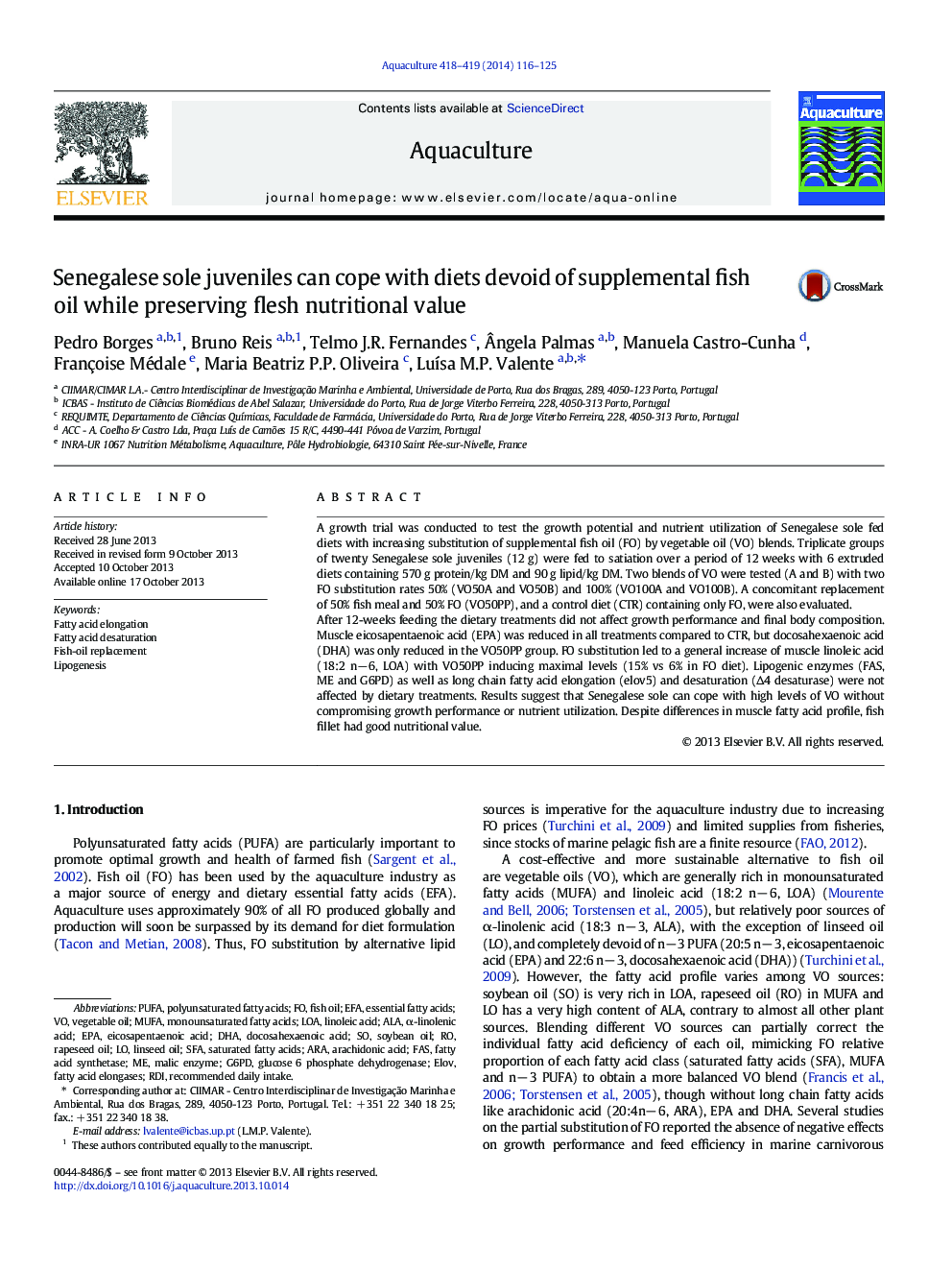| Article ID | Journal | Published Year | Pages | File Type |
|---|---|---|---|---|
| 8495327 | Aquaculture | 2014 | 10 Pages |
Abstract
After 12-weeks feeding the dietary treatments did not affect growth performance and final body composition. Muscle eicosapentaenoic acid (EPA) was reduced in all treatments compared to CTR, but docosahexaenoic acid (DHA) was only reduced in the VO50PP group. FO substitution led to a general increase of muscle linoleic acid (18:2 nâ 6, LOA) with VO50PP inducing maximal levels (15% vs 6% in FO diet). Lipogenic enzymes (FAS, ME and G6PD) as well as long chain fatty acid elongation (elov5) and desaturation (Î4 desaturase) were not affected by dietary treatments. Results suggest that Senegalese sole can cope with high levels of VO without compromising growth performance or nutrient utilization. Despite differences in muscle fatty acid profile, fish fillet had good nutritional value.
Keywords
G6PDRDIALASFAFASEFAEPAMUFAFatty acid synthetasemalic enzymeα-linolenic acidArachidonic acidEicosapentaenoic aciddocosahexaenoic acidLinoleic acidPolyunsaturated fatty acidsPUFAsaturated fatty acidsEssential fatty acidsmonounsaturated fatty acidsFatty acid desaturationARADHALinseed oilVegetable oilSoybean oilFish oilRapeseed oilLipogenesisLoARecommended daily intakeFatty acid elongationGlucose 6 phosphate dehydrogenase
Related Topics
Life Sciences
Agricultural and Biological Sciences
Aquatic Science
Authors
Pedro Borges, Bruno Reis, Telmo J.R. Fernandes, Ãngela Palmas, Manuela Castro-Cunha, Françoise Médale, Maria Beatriz P.P. Oliveira, LuÃsa M.P. Valente,
